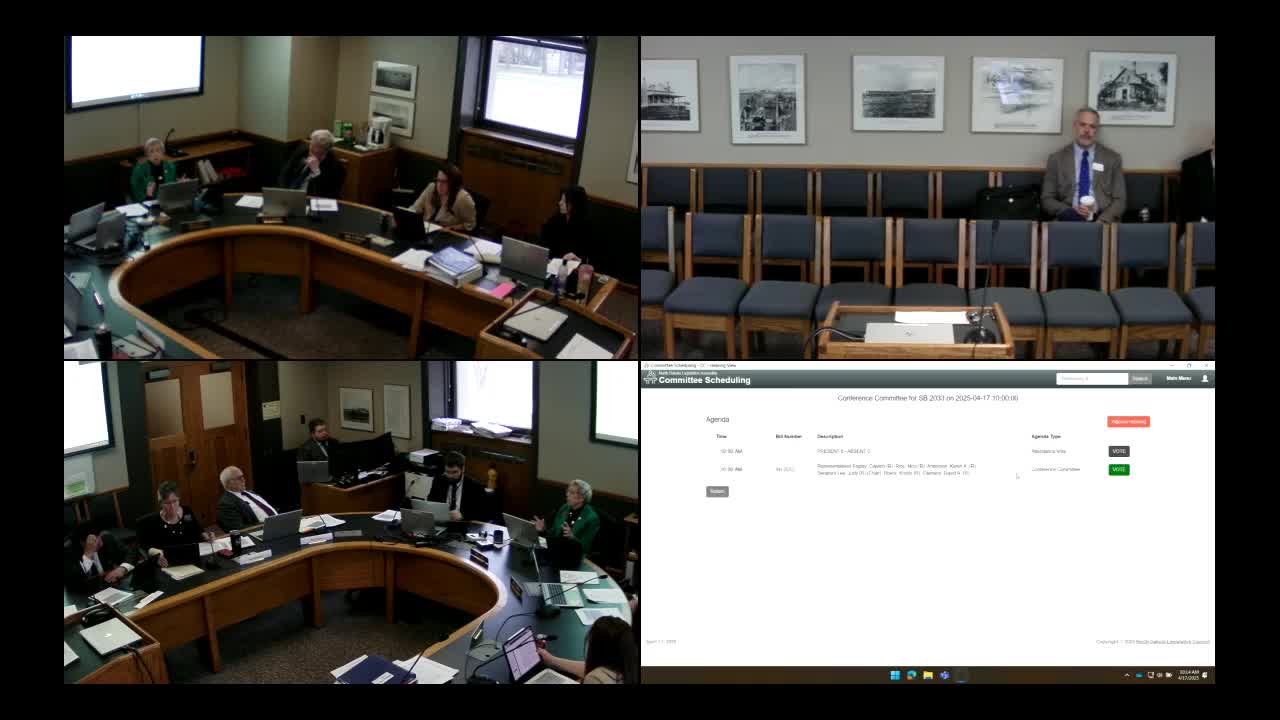Representative Figley discusses solutions to regional ambulance service struggles
April 17, 2025 | Senate, Legislative, North Dakota
This article was created by AI summarizing key points discussed. AI makes mistakes, so for full details and context, please refer to the video of the full meeting. Please report any errors so we can fix them. Report an error »

In a recent meeting of the North Dakota Legislature's SB 2033 Conference Committee, discussions centered on the critical challenges facing local ambulance services. The committee explored potential adjustments to territorial boundaries to ensure adequate coverage and support for struggling ambulance services, emphasizing the need for a structured approach to address these issues.
One of the key points raised was the importance of communication between communities and their ambulance services. Legislators acknowledged that many communities may not fully understand the extent of the challenges their local services face. Representative Figley highlighted a communication gap, particularly among younger generations, which could hinder recruitment efforts for volunteer EMTs. The committee members expressed a desire for increased dialogue to raise awareness and encourage community involvement in sustaining these essential services.
The discussions also touched on the historical context of ambulance service struggles in both urban and rural areas. For instance, the town of Castleton faced significant staffing issues that led to the hiring of paid staff during weekdays, while volunteers covered evenings and weekends. This situation reflects a broader trend across the state, where a shortage of volunteers poses a serious threat to the viability of ambulance services.
As the committee deliberated, there was a consensus on the need for a supportive framework that could help districts in distress. Suggestions included finding more inviting language to encourage participation without using terms that might seem coercive. The aim is to foster a collaborative environment where communities can work together to ensure their ambulance services remain operational.
In conclusion, the meeting underscored the urgent need for proactive measures to address the challenges facing ambulance services in North Dakota. As discussions continue, the committee is expected to explore further strategies to enhance communication and community engagement, ultimately aiming to secure the future of these vital emergency services.
One of the key points raised was the importance of communication between communities and their ambulance services. Legislators acknowledged that many communities may not fully understand the extent of the challenges their local services face. Representative Figley highlighted a communication gap, particularly among younger generations, which could hinder recruitment efforts for volunteer EMTs. The committee members expressed a desire for increased dialogue to raise awareness and encourage community involvement in sustaining these essential services.
The discussions also touched on the historical context of ambulance service struggles in both urban and rural areas. For instance, the town of Castleton faced significant staffing issues that led to the hiring of paid staff during weekdays, while volunteers covered evenings and weekends. This situation reflects a broader trend across the state, where a shortage of volunteers poses a serious threat to the viability of ambulance services.
As the committee deliberated, there was a consensus on the need for a supportive framework that could help districts in distress. Suggestions included finding more inviting language to encourage participation without using terms that might seem coercive. The aim is to foster a collaborative environment where communities can work together to ensure their ambulance services remain operational.
In conclusion, the meeting underscored the urgent need for proactive measures to address the challenges facing ambulance services in North Dakota. As discussions continue, the committee is expected to explore further strategies to enhance communication and community engagement, ultimately aiming to secure the future of these vital emergency services.
View full meeting
This article is based on a recent meeting—watch the full video and explore the complete transcript for deeper insights into the discussion.
View full meeting
